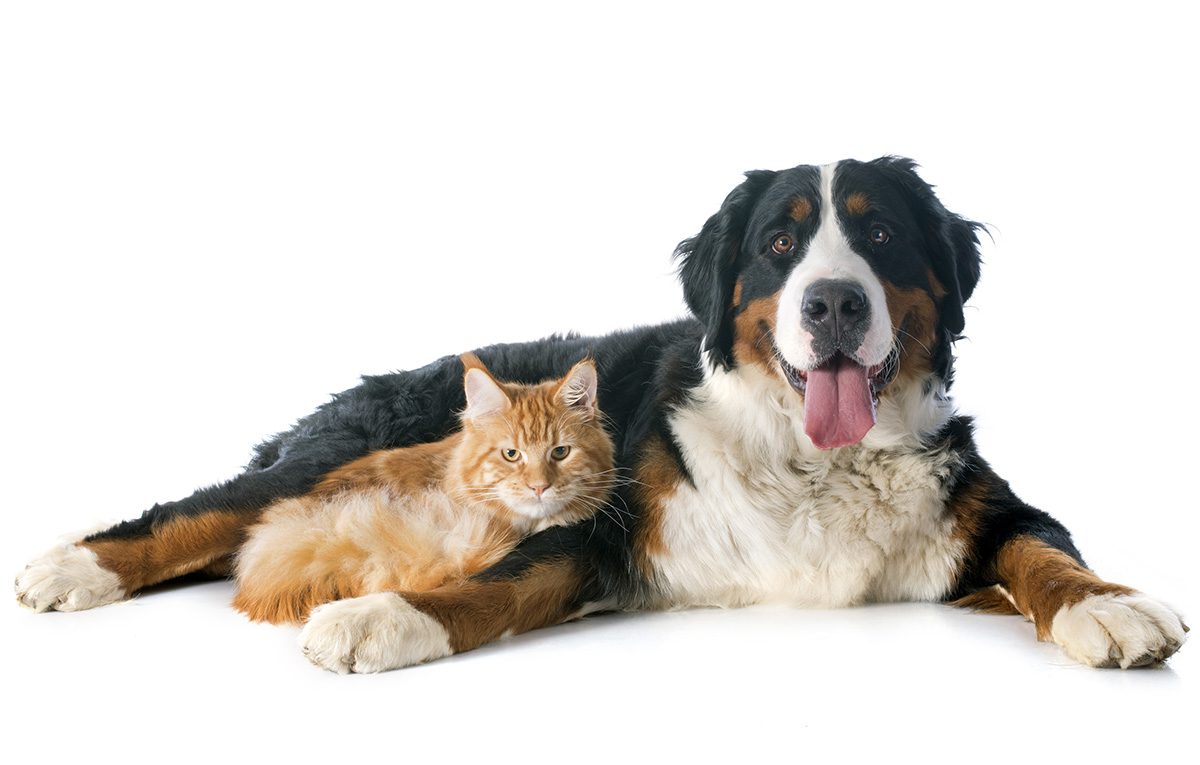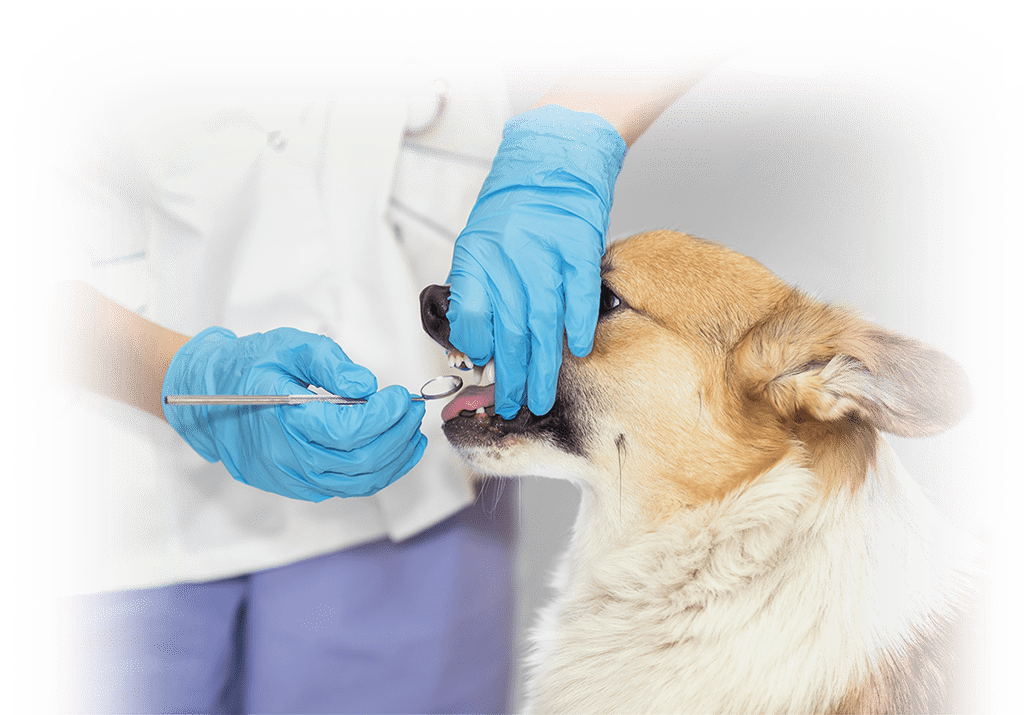Dental Cleanings
We deep clean you pet’s teeth safely under general anesthesia.


Benefits of dental cleaning for dogs and cats
- Prevention of Dental Disease: Regular cleanings help prevent periodontal disease, which can lead to tooth loss and other health issues.
- Fresh Breath: Professional cleaning removes tartar and plaque, leading to fresher breath for your dog.
- Early Detection of Problems: Veterinarians can identify dental issues early, such as broken teeth, infections, or oral tumors.
- Healthier Gums: Cleaning promotes healthier gums, reducing inflammation and the risk of gum disease.
- Improved Overall Health: Dental health is linked to overall health; poor oral hygiene can lead to heart, liver, and kidney problems.
- Pain Relief: Removing plaque and tartar can alleviate discomfort and pain associated with dental issues.
- Better Quality of Life: Regular dental care can enhance your dog’s quality of life, making them more playful and active.
- Professional Expertise: Veterinarians have the training and tools necessary to perform thorough and safe cleanings.
- Preventive Care: Establishing a routine for dental cleanings can help maintain your dog’s oral health over time.
Dental Cleaning Includes
- Wellness exam / dental review
- Teeth Scaling above and below the gum line
- Teeth Polishing
- Anti-bacterial rinse
- Oravet barrier sealant
- Use of any sedation or anesthesia
Dental Cleaning Benefits
- Improves overall health and wellness
- Helps prevent tooth loss
- Reduces illnesses & organ damage caused by bacteria
- Virtually eliminates bad breath
- Reduces gum inflammation and dental disease
- Eliminates most stains and tartar
Veterinary Dental Cleaning Under General Anesthesia ($200 and up)
Comprehensive Cleaning
General anesthesia allows for a thorough dental cleaning, including subgingival scaling (removal of plaque and tartar below the gumline), where periodontal disease begins.
Safe and Pain-Free
Pets are completely unconscious and pain-free, preventing stress, discomfort, and sudden movements. This allows us to perform detailed cleanings, periodontal therapy, and extractions if needed.
Full Mouth X-Rays ($130)
Dental radiographs are essential for identifying hidden disease beneath the gumline, such as tooth root abscesses, resorptive lesions, or bone loss that cannot be seen during a visual exam. X-Rays are additional to our base price and may be optional depending on the amount of periodontal disease your pet has.
Airway Protection
Pets are intubated, preventing aspiration of water, plaque, or debris during the procedure. This is also a practice with dental cleanings we do under sedation.
Long-Term Oral Health Benefits
Proper removal of subgingival bacteria and diseased teeth helps slow the progression of periodontal disease, reducing the risk of tooth loss, infections, and even systemic health issues.
Our Commitment to Safety
During our dental cleanings, every anesthetized pet receives individualized care, including
- Pre-anesthetic bloodwork to assess overall health
- Advanced monitoring (heart rate, oxygen levels, blood pressure) during the procedure
- Pain management before, during, and after the cleaning
- Personalized aftercare instructions to ensure a smooth recovery
Schedule a consultation today to learn more!
Safety First
For Dogs or Cats Age 7 or Older:
Pets age 7 or older require a full blood panel prior to being put under using anesthesia in order to assess their overall health and identify any underlying medical conditions that could increase the risk of complications during the procedure. The blood panel helps evaluate organ function, including the liver and kidneys, checks for anemia, and ensures that the pet is fit for anesthesia. This precaution allows veterinarians to make informed decisions about the safest approach for the pet’s dental care and tailor the anesthesia plan accordingly.

A closer look at your dog’s teeth
A healthy dog has a wide variety of teeth. 42 adult teeth, 4 blunt canines, 12 incisors, 12 premolars, 10 molars. One of the problematic bacteria that lurks in your dog’s mouth is called Capnocytophaga canimorsus which can build up over time and can adversely affect your pet’s oral health.

Fending off bacteria is a never-ending battle
While it would be nice if one deep cleaning could rid bacteria from your cat’s mouth forever, that’s not how life works. Your pet needs regular teeth cleaning to eliminate a wide variety of bacteria which can lead to gum disease and other chronic problems if not continually addressed.

Teeth cleaning includes a dental exam
In addition to cleaning your dog or cat’s teeth, our veterinarian performs a dental exam to check various indicators of oral health:
Tartar Buildup
The vet will check for the amount of tartar buildup on the teeth and gums.
Oral Tumors
They will check for any lumps or growths in the mouth.
Signs of Pain
The vet will observe the animal’s behavior for signs of discomfort or pain while eating or being handled.
Gum Inflammation
Bad Breath
Plaque
Broken or Chipped Teeth
The vet will check for any damage or fractures in the teeth.
Abnormal Bite
The vet will check for any malocclusions or misalignment of the teeth.
Overall Oral Health
Loose Teeth
The vet will check for any loose teeth, which may indicate periodontal disease.
NOTE: Dental Prophylasxis, by law, is only allowed under the direct supervision of a licensed veterinarian. Do not allow any groomer to do this. Groomers are limited to brushing your pets teeth.

Teeth cleaning for your dog or cat under general anesthesia
Our veterinarian and veterinary technicians have the experience necessary to ensure safe and comfortable teeth cleaning to improve your dog or cat’s health, appearance, and breath.



Neglecting your pet’s teeth can lead to periodontal disease.
Plaque and tartar buildup are a natural part of a dog’s life. But left untreated, excessive buildup of plaque and calculus can lead to more serious problems like periodontal disease, chronic pain, bone degeneration, and gingivitis of your pet’s gums.
Keep your pet on the path to healthy teeth and gums
Your pet care journey with VanVets includes a comprehensive medical record of your pet that will include your pet’s visit history notes neatly organized to ensure future appointments will be comprehensive and efficient. Current vaccinations, any current or past medical conditions or issues, any medication allergies or previous reactions are examples of information that is extremely helpful for the veterinarians and technicians to better know your pet.
We requests some background information on your pet prior to your appointment so that we can provide the best possible care. To better understand your pet, we ask that pet owners complete a simple medical history form of their pet prior to their pet’s appointment and evaluation process.



